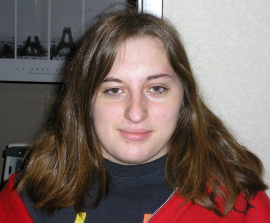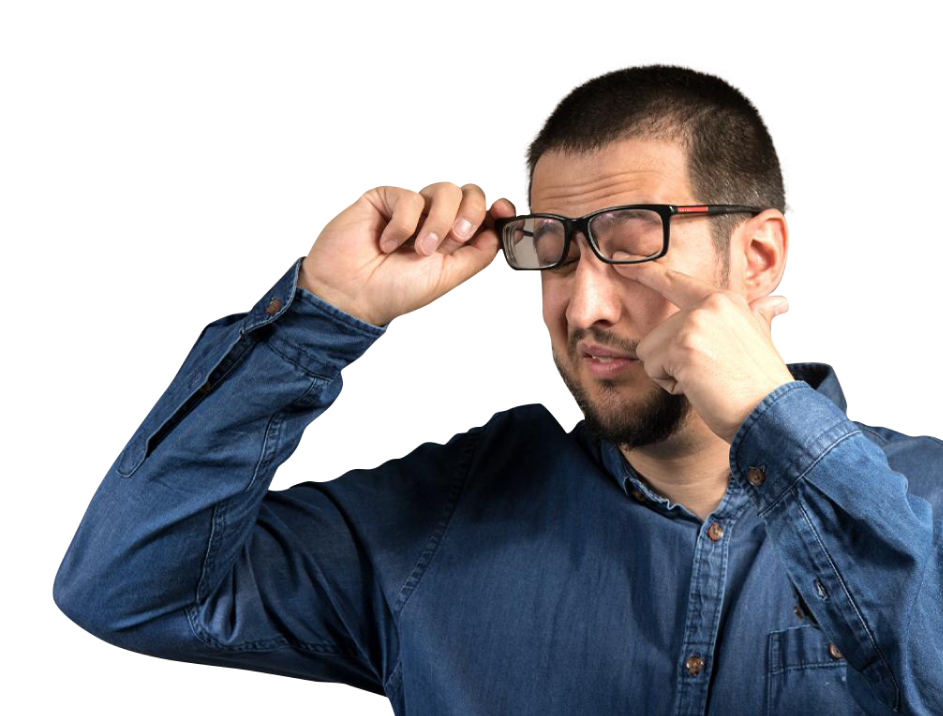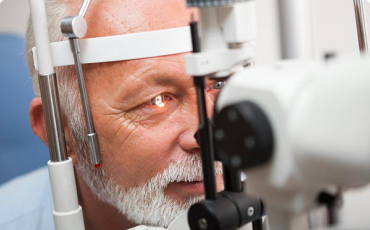Welcome! You’re probably here for one or more of the following:
• You have experienced symptoms such as headaches, blurry vision, dizziness, or anxiety over a short or extended period of time
• You have seen one or more specialists for your symptoms and nothing seems to help
• You have experienced a concussion or traumatic brain injury (TBI) You have been diagnosed with ADHD, dyslexia, other learning disabilities
• You were asked by a friend to “just take the test”
What is Binocular Vision Dysfunction?
Have you ever wondered why, despite having two eyes, you only see one image? This is called binocular vision. Our brain is so intricate and complex that it’s able to turn two separate images into one clear image. In order for this to occur, it’s essential for the eyes to be in perfect alignment. In people who have good binocular vision, the eyes work in tandem and are perfectly in sync at all times, which allows them to send one clear, focused picture to the brain.
But when the eyes do not work smoothly together and are not perfectly synchronized, this is called Binocular Vision Dysfunction. People with BVD struggle to see one clear image. This leads to discomfort such as double-vision, headaches, dizziness, even problems reading.
For people who have BVD, their eyes are not in alignment (not in sync) so their eyes will transmit two images to the brain that are in slightly different positions to one another. The brain won’t accept this situation and responds by forcing the eye aligning muscles to fix the problem by realigning the eyes. The realignment is only temporary and misalignment then recurs, which is followed closely by realignment.
So there becomes a continuous cycle of image misalignment and realignment, which makes the brain believe things are moving, and as you can imagine, puts a great deal of strain on the eye muscles. The eyes become tired and sore, which can lead to a variety of unpleasant and sometimes painful symptoms, such as headaches and facial pain.
Causes of Binocular Vision Dysfunction
Commonly confused with “sinus” issues and migraines, BVD can develop as a result of a stroke, brain injury or similar neurological disorder. It can manifest at any time, with symptoms usually developing around 40-years of age.
Facial asymmetry, where one eye is physically higher than the other one (see figure 1 below) can also be a factor in causing this condition. Facial asymmetry or a nerve or eye muscle abnormality is something many people are born with. Over time, these individuals often start to develop BVD as the eye muscles get weaker with age and become overworked.
Many people with Binocular Vision Dysfunction will try to improve their vision (and reduce their symptoms) by tilting their heads. VICE recently published the article, A Stranger Diagnosed Me With Misaligned Eyes, where the author recounts her experience living with BVD, including this iconic head tilt.
When the head is tilted to the side toward the shoulder, images move down in one eye and up in the other. While tilting the head does help fix the misalignment, it can also lead to chronic neck pain.

Figure 1

Symptoms of Binocular Vision Dysfunction
When you have Binocular Vision Dysfunction, the list of possible symptoms can feel endless. Some people experience a handful of symptoms, while for others it’s more like fistfuls, completely disrupting their lives and resulting in disability. Symptoms can include:


It’s common for people to have been diagnosed with a myriad of other conditions, then find out that Binocular Vision Dysfunction was the true culprit. These other conditions include:
- ADD / ADHD
- Agoraphobia
- Anxiety / Panic disorders
- Persistent Post-Concussive symptoms
- Cervical misalignment
- Meniere’s Disease
- BPPV (Benign Paroxysmal Positional Vertigo)
- Psychogenic dizziness / Chronic Subjective Dizziness
- PPPD (Persistent Postural-Perceptual Dizziness)
- Vestibular Migraine / Migraine Associated Vertigo (MAV)
- Migraines
- MS (Multiple Sclerosis)
- Reading & learning disabilities
- Sinus problems
- Stroke
- TMJ disorders
Let’s Treat Your Binocular Vision Dysfunction
Are you familiar with some of these symptoms? If so, meeting with a NeuroVisual professional can get you the treatment you need. At Vision Specialists of Michigan, your detailed and thorough evaluation goes above and beyond a regular eye exam, and is specifically designed to detect Binocular Vision Dysfunction.
After the exam, any problems with alignment, far vision or near vision will be treated and corrected using specialized realigning eyeglasses.










